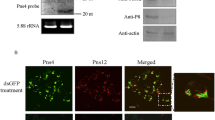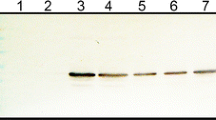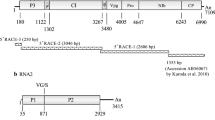Summary
The nucleotide sequence of the genome segment 2 (S2) of rice gall dwarf virus (RGDV), a phytoreovirus, when compared with the amino acid sequence of a component protein of the virus, showed that S2 potentially encoded a 127K minor outer capsid protein. This 127K protein designated as P2 and the 127K minor outer capsid protein (also termed P2) of rice dwarf virus (RDV) are similar in size, located in the outer capsid, and have well-conserved predicted polypeptide sequences, suggesting similar functions. Infectivity to insect vector cell monolayers of RGDV was maintained and the P2 protein was retained irrespective of carbon tetrachloride (CCl4) treatment. This is in contrast to the infectivity of RDV which is removed along with P2 protein following CCl4 treatment. RGDV with P2 was acquired by vector insects and transmitted to host plants, although RDV lacking P2 could not be transmitted to plants as previously published. These results imply that RDV and RGDV require P2 proteins for virus infectivity to vector insects.
Similar content being viewed by others

Author information
Authors and Affiliations
Additional information
Received January 6, 1997 Accepted May 14, 1997
Rights and permissions
About this article
Cite this article
Maruyama, W., Ichimi, K., Fukui, Y. et al. The minor outer capsid protein P2 of rice gall dwarf virus has a primary structure conserved with, yet is chemically dissimilar to, rice dwarf virus P2, a protein associated with virus infectivity. Arch. Virol. 142, 2011–2019 (1997). https://doi.org/10.1007/s007050050218
Published:
Issue Date:
DOI: https://doi.org/10.1007/s007050050218



